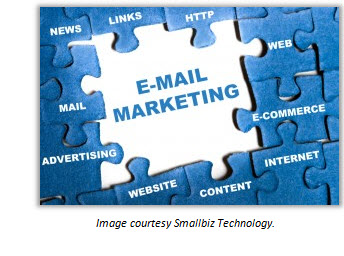 If you’re a small-business owner or marketing manager, you may not have included “increase marketing return-on-investment” among your 2014 New Year’s resolutions. But my guess is such a goal ranks fairly highly on your list of desired accomplishments.
If you’re a small-business owner or marketing manager, you may not have included “increase marketing return-on-investment” among your 2014 New Year’s resolutions. But my guess is such a goal ranks fairly highly on your list of desired accomplishments.
So with all the hype surrounding how social media is transforming the digital marketing landscape, it might be easy for you to follow blindly without maintaining focus on the big picture, i.e., increasing your marketing ROI.
Without a doubt, using social media to augment your small business’ broader marketing strategy can be incredibly effective when implemented properly. But the word “augment” is key here, because if you embrace social media to the detriment of tried-and-true marketing vehicles simply because the hype says “social’s the future,” it’s likely you’ll be faced with disappointing results.
In today’s marketplace most businesses include social marketing activities to some degree, whether it’s through a Facebook or Google+ page, a Pinterest page, a Twitter handle, a YouTube channel or any combination thereof, as well as via seemingly countless other social arenas.
But again, as necessary as those activities are, they shouldn’t command so much emphasis that you end up de-emphasizing the “old-school” marketing-communications vehicles that continue to prove their value in driving substantial bottom-line results.
One such practice is email marketing; and while most of us gripe about the number of sales-oriented messages that regularly clog our inboxes, those entrenched along the front line of marketing know the only reason those messages are broadcast is because they’re effective.
The following quote, taken from the excellent McKinsey & Company article, “Why marketers should keep sending you e-mails,” strongly supports the pro-marketing-email argument:
“E-mail remains a significantly more effective way to acquire customers than social media—nearly 40 times that of Facebook and Twitter combined.”
The reasons cited for that disparity are simple: “…91 percent of all US consumers still use e-mail daily [source: ExactTarget, 2012 Channel Preference Survey], and the rate at which e-mails prompt purchases is not only estimated to be at least three times that of social media, but the average order value is also 17 percent higher [source: eMarketer, Email Marketing Benchmarks: Key Data, Trends, and Metrics, February 2013].”
Email marketing becomes even more fruitful when integrated with a broader content marketing strategy; one that provides your audience with practical, helpful information that avoids directly pushing one’s products or services.
So if you’re committed to making your marketing activities more effective from a ROI standpoint, and are ready to jump into social media as your primary means of doing so, look before you leap. Social marketing tactics can be—should be—integral to most marketing campaigns; but not at the expense of the methods you already know work so well.


